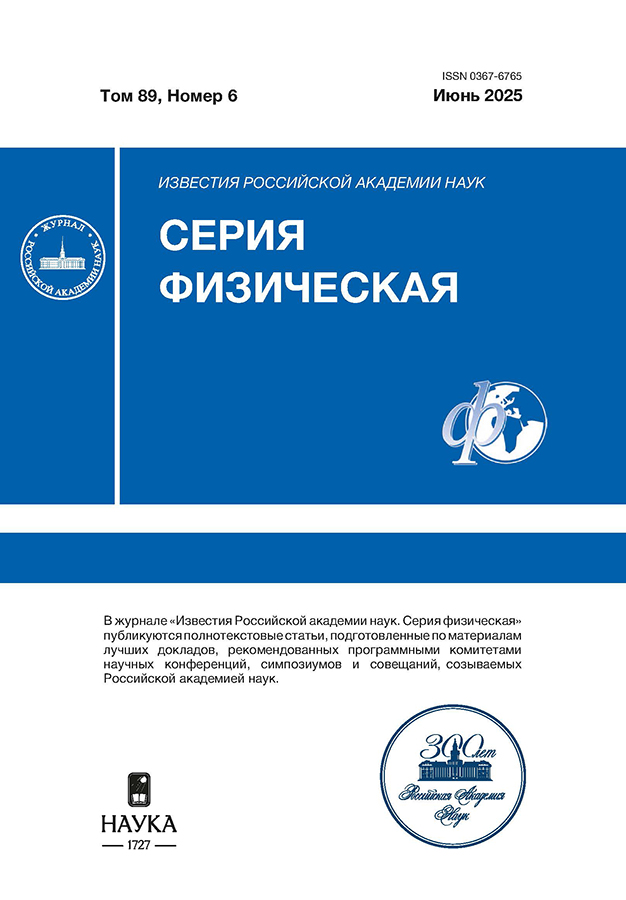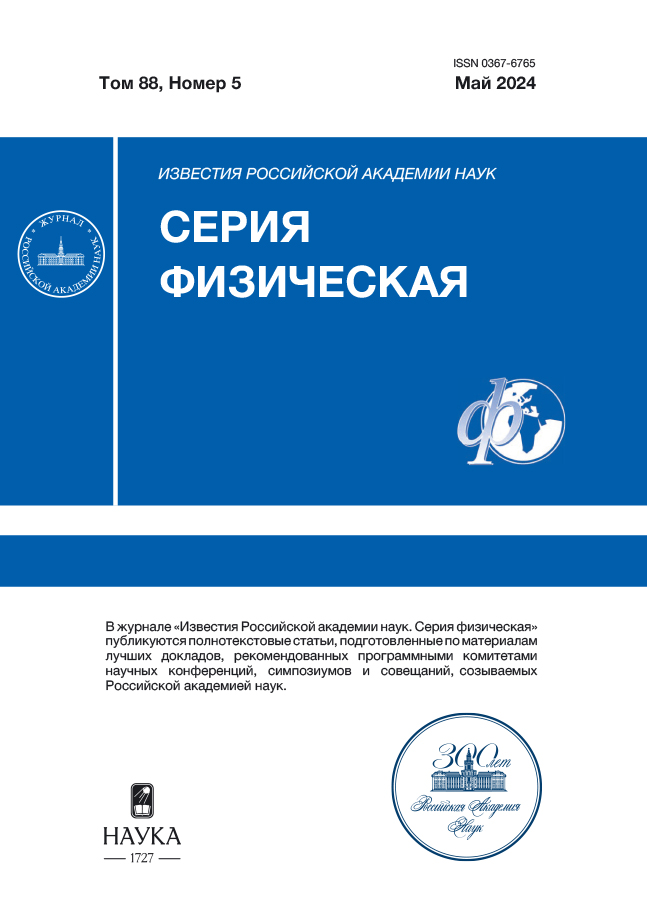Структура и свойства марганец-замещенного гидроксиапатита
- Авторы: Быстров В.С.1, Парамонова Е.В.1, Авакян Л.А.2, Макарова С.В.3, Булина Н.В.3
-
Учреждения:
- Институт математических проблем биологии Российской академии наук — филиал Федерального государственного учреждения «Федеральный исследовательский центр Институт прикладной математики имени М.В. Келдыша Российской академии наук»
- Федеральное государственное автономное образовательное учреждение высшего образования «Южный федеральный университет»
- Федеральное государственное бюджетное учреждение науки «Институт химии твердого тела и механохимии Сибирского отделения Российской академии наук»
- Выпуск: Том 88, № 5 (2024)
- Страницы: 774-780
- Раздел: Физика сегнетоэлектриков
- URL: https://gynecology.orscience.ru/0367-6765/article/view/654684
- DOI: https://doi.org/10.31857/S0367676524050133
- EDN: https://elibrary.ru/QEOORX
- ID: 654684
Цитировать
Полный текст
Аннотация
Представлены результаты расчетов замещений атомов кальция на марганец в гидроксиапатите методами теории функционала плотности. Изменение параметров и объема ячейки, энергетических зон и энергии образования замещений с ростом числа замещений в разных позициях кальция (типа 1 и 2) проанализированы в сравнении с экспериментальными данными. Показано, что замена катионов кальция на марганец происходит преимущественно в позиции кальция типа 2.
Полный текст
Об авторах
В. С. Быстров
Институт математических проблем биологии Российской академии наук — филиал Федерального государственного учреждения «Федеральный исследовательский центр Институт прикладной математики имени М.В. Келдыша Российской академии наук»
Автор, ответственный за переписку.
Email: vsbys@mail.ru
Россия, Пущино
Е. В. Парамонова
Институт математических проблем биологии Российской академии наук — филиал Федерального государственного учреждения «Федеральный исследовательский центр Институт прикладной математики имени М.В. Келдыша Российской академии наук»
Email: vsbys@mail.ru
Россия, Пущино
Л. А. Авакян
Федеральное государственное автономное образовательное учреждение высшего образования «Южный федеральный университет»
Email: vsbys@mail.ru
физический факультет
Россия, Ростов-на-ДонуС. В. Макарова
Федеральное государственное бюджетное учреждение науки «Институт химии твердого тела и механохимии Сибирского отделения Российской академии наук»
Email: vsbys@mail.ru
Россия, Новосибирск
Н. В. Булина
Федеральное государственное бюджетное учреждение науки «Институт химии твердого тела и механохимии Сибирского отделения Российской академии наук»
Email: vsbys@mail.ru
Россия, Новосибирск
Список литературы
- Epple M., Ganesan K., Heumann R. et al. // J. Mater. Chem. 2010. V. 20. P. 18.
- Ducheyne P., Healy K., Hutmacher D.E. et al. Comprehensive biomaterials II. Seven-Volume Set. Amsterdam: Elsevier, 2017.
- Ratner B.D., Hoffman A.S., Schoen F.J., Lemons J.E. Biomaterials Science. Oxford: Academic Press, 2013.
- Баринов С.М., Комлев В.С. // Неорг. матер. 2016. Т. 52. № 4. С. 383; Barinov S.M., Komlev V.S. // In-org. Mater. 2016. V. 52. P. 339.
- Dorozhkin S.V. // Mater. Sci. Eng. C Mater. Biol. Appl. 2015. V. 55. P. 272.
- Dorozhkin S.V. // Coatings. 2022. V. 12. P. 1380.
- Baltacis K., Bystrov V., Bystrova A. et al. // Materials. 2020. V. 13. P. 4575.
- Ratnayake J.T.B., Mucalo M., Dias G.J. // J. Biomed. Mater. Res. B. Appl. Biomater. 2017. V. 105. P. 1285.
- Elliott J. C. Structure and chemistry of the apatites and other calcium orthophosphates. Studies in inorganic chemistry. Amsterdam: Elsevier, 1994. 404 p.
- Kay M.I., Young R.A., Posner A.S. // Nature. 1964. V. 204. P. 1050.
- Hughes J.M., Cameron M., Crowley K.D. // Amer. Mineral. 1989. V. 74. P. 870.
- Šupova M. // Ceram. Int. 2015. V. 41. P. 9203.
- Tite T., Popa A.-C., Balescu L.M. et al. // Materials. 2018. V. 11 P. 2081.
- Silva L.M.D., Tavares D.D.S., Santos E.A.D. // Mater. Res. 2020. V. 23. No. 2. Art. No. e20200083.
- Li Y., Widodo J., Lim S., Ooi C. P. // J. Mater. Sci. 2012. V. 47. P. 754.
- Rau J.V., Fadeeva I.V., Fomin A.S. et al. // ACS Biomater. Sci. Eng. 2019. V. 5. P. 6632.
- Fadeeva I., Kalita V., Komlev D. // Materials. 2020. V. 13. P. 4411.
- Фадеева И.В., Фомин А.С., Баринов С.М. и др. // Неорг. матер. 2020. Т. 56. № 7. С. 738; Fadeeva I.V., Fomin A.S., Barinov S.M. et al. // Inorg. Mater. 2020. V. 56. No. 7. P. 700.
- Liu H., Cui X., Lu X. et al. // Chem. Geol. 2021. V. 579. Art. No. 120354.
- Shurtakova D.V., Grishin P.O., Gafurov M.R., Mamin G. V. // Crystals. 2021. V. 11. P. 1050.
- Murzakhanov F., Gabbasov B., Iskhakova K. et al. // Magn. Reson. Solids. 2017. V. 19. Art. No. 17207.
- Torres P.M.C., Vieira S.I., Cerqueira A.R. et al. // J. Inorg. Biochem. 2014. V. 136. P. 57.
- Bystrov V.S. // Math. Biol. Bioinform. 2017. V. 12. P. 14.
- Bystrov V., Paramonova E., Avakyan L. et al. // Nanomater. 2021. V. 11. P. 2752.
- Bystrov V.S., Paramonova E.V., Avakyan L.A. et al. // Materials. 2023. V. 16. P. 5945.
- Matsunaga K., Kuwabara A. // Phys. Rev. B. 2007. V. 75. Art. No. 014102.
- Slepko A., Demkov A.A. // Phys. Rev. B. Cond. Matter Mater. Phys. 2011. V. 84. Art. No. 134108.
- Sadetskaya A.V., Bobrysheva N.P., Osmolowsky M.G. et al. // Mater. Charact. 2021. V. 173. Art. No. 110911.
- Bystrov V.S., Coutinho J., Bystrova A.V. et al. // J. Phys. D. Appl. Phys. 2015. V. 48. Art. No. 195302.
- Avakyan L.A., Paramonova E.V., Coutinho J. et al // J. Chem. Phys. 2018. V. 148. P. 154706.
- Bystrov V.S., Avakyan L.A., Paramonova E.V., Coutinho J. // J. Chem. Phys. C. 2019. V. 123. P. 4856.
- Bystrov V.S., Piccirillo C., Tobaldi D.M. et al. // Appl. Catal. B. Environ. 2016. V. 196. P. 100.
- Avakyan L., Paramonova E., Bystrov V. et al. // Nanomaterials. 2021. V. 11. P. 2978.
- Bystrov V.S., Paramonova E.V., Bystrova A.V. et al. // Ferroelectrics. 2022. V. 590. P. 41.
- Bulina N.V., Chaikina M.V., Andreev A.S. et al. // Eur. J. Inorg. Chem. 2014. V. 2014. P. 4810.
- Булина Н.В., Чайкина М.В., Просанов И.Ю. // Неорг. матер. 2018. Т. 54. № 8. С. 866; Bulina N. V., Chaikina M. V., Prosanov I. Y. // Inorg. Mater. 2018. V. 54. P. 820.
- Bulina N.V., Makarova S.V., Prosanov I.Y. et al. // J. Solid State Chem. 2020. V. 282. P. 121076.
- Bulina N.V., Avakyan L.A., Makarova S.V. et al. // Minerals. 2023. V. 13. P. 102.
- Perdew J.P., Burke K., Ernzerhof M. // Phys. Rev. Lett. 1996. V. 77. P. 3865.
- Krukau A.V., Vydrov O.A., Izmaylov A.F., Scuseria G.E. // J. Chem. Phys. 2006. V. 125. P. 224106.
- https://www.quantum-espresso.org/.
- Lala S., Ghosh M., Das P.K. et al. // Dalton Trans. 2015. V. 44. P. 20087.
- Котов Л.В., Северин П.А., Власов В.С., Миронов В.В. // Изв. РАН. Сер. физ. 2023. Т. 87. № 3. С. 422; Kotov L.N., Severin P.A., Vlasov V.S., Mironov V.V. // Bull. Russ. Acad. Sci. Phys. 2023. V. 87. No. 3. P. 367.
- Шуртакова Д.В. Природа примесных центров в синтетических фосфатах кальция по данным электронного парамагнитного резонанса. Дисс. … канд. физ.-мат. наук. Казань: Казанский (Приволжский) фед. ун-т, 2023. 122 с.
Дополнительные файлы














